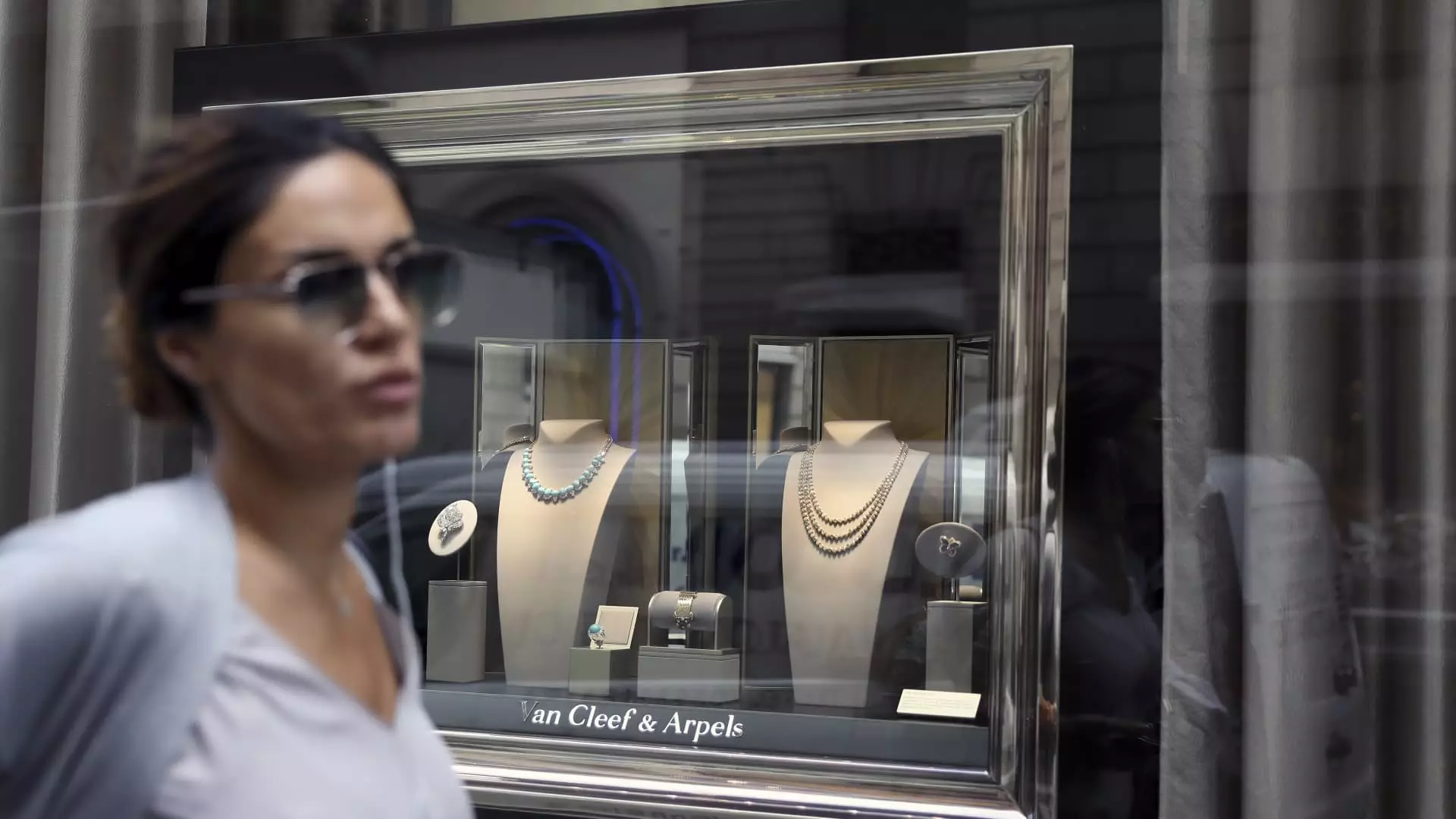In an era where economic uncertainty looms, the wealthiest individuals continue to encase themselves in opulence with diamonds, pearls, and gemstones that not only dazzle the eye but also showcase their affluence. While the general luxury market may be experiencing a contraction, the narrative surrounding high-end jewelry remains distinctly different. This sector is flourishing, invigorated by a class of discerning elites who, even amid broad economic headwinds, refuse to compromise on quality and prestige. The luxury industry, traditionally known for its resilience, is bifurcating into two spheres: the super-rich who demand only the rarest and finest gemstones, and the broader luxury market where consumers are becoming increasingly cautious.
Richemont: Jewels of Success
At the forefront of this jewelry renaissance is Richemont, the Swiss luxury group that boasts a portfolio filled with some of the world’s most coveted brands, including Cartier, Van Cleef & Arpels, and Buccellati. Recent financial reports reveal Richemont’s jewelry segment as a shining star, with a remarkable 11% growth in the last quarter of the fiscal year and an overall 8% increase for the year. This surge indicates not merely a recovery but a renewing demand for heirloom-quality pieces that symbolize enduring wealth. As Luca Solca aptly noted, Richemont’s jewelry brands remain unrivaled in desirability, suggesting that these gems are more than mere adornments; they are symbols of status in a world that increasingly craves exclusivity.
Challenges amid Triumphs
Yet, despite Richemont’s fortuitous position, the landscape is not without its complexities. The company’s Specialist Watchmakers division, which houses prestigious brands like Piaget, has witnessed a stark 13% decline in watch sales, predominantly propelled by diminishing demand in China. The luxury watch market has always operated on the principle of long-term desirability, where purchases are often seen as investments. Yet, we find ourselves in a peculiar moment post-COVID-19, where individuals have satiated their desires for luxury timepieces, producing an inevitable lag in new demand.
This paradigm shift is not exclusive to Richemont. Competitors like LVMH are feeling the reverberations as well, with flat growth, especially in their watch and jewelry segment. The narrative is clear: the reeling watch market stands in stark contrast to the flourishing jewelry division, creating an ironic dynamic within the luxury sector.
The Growing Divide in Luxury Items
The divergence in consumer behavior regarding jewelry and watches presents a vital insight into the broader luxury marketplace. As Luca Solca insightfully remarked, the propensity for consumers to purchase jewelry more frequently is a telling factor. Amid rising price points for luxury handbags and a general tightening in disposable income, jewelry has maintained a more favorable position among consumers, especially as it becomes relatively less expensive. As such, Richemont’s jewelry brands could well be positioned not just for survival but for a thriving future in the luxurious landscape.
Moreover, this segment’s robustness presents a unique opportunity for Richemont. The company’s leadership strategy not to engage in unsustainable price increases fosters customer loyalty while also attracting newcomers seeking value in a chaotic market. With competitors raising prices, Richemont’s commitment to quality and sustainability could provide a competitive advantage that secures market share.
External Pressures: The Larger Economic Picture
However, external factors loom heavy over Richemont and the luxury sector at large. Rising gold prices, the strengthening of the Swiss franc against the dollar, and the specter of tariffs all present real challenges that could ultimately undermine growth. Investment director Russ Mould’s commentary underscores this precarious balance: while Richemont basks in the strength of its jewelry arm, it must navigate through significant economic pressures that threaten its well-earned market dominance.
As luxury aficionados display their opulent accessories against the backdrop of global uncertainty, it is crucial to recognize the immutable truth: the luxury market is a fickle beast. The ongoing disparities within the sector reveal an intricate tapestry of consumer behavior, preferences, and economic realities. Richemont, while currently basking in the glow of success thanks to its jewelry empire, must remain vigilant. The glitter of diamonds may shine bright, yet the shadows cast by market fluctuations and external pressures remind us that the pursuit of luxury is an ever evolving, precarious affair.

Leave a Reply